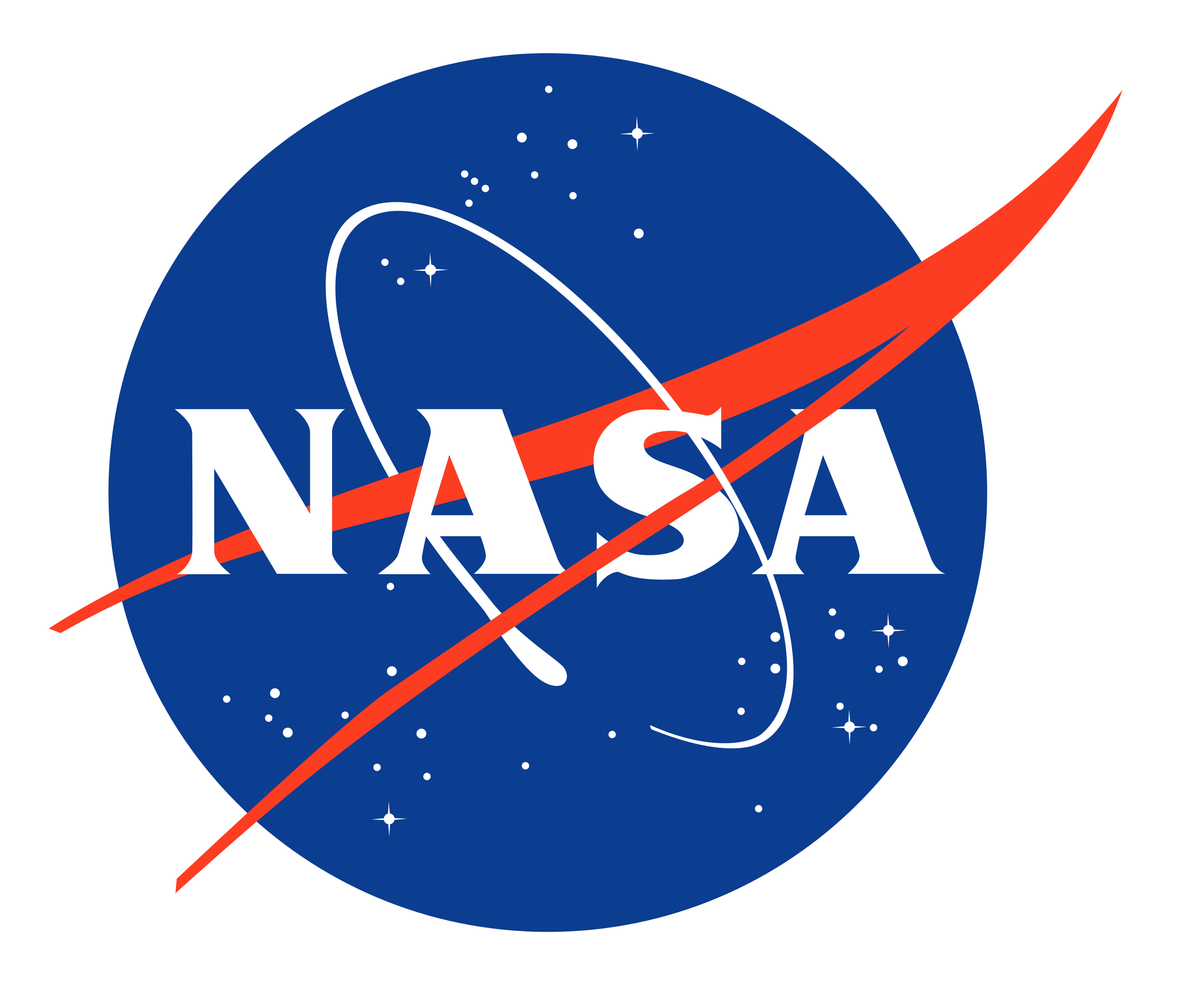This infrared image from NASA's Spitzer Space Telescope shows the Helix nebula, a cosmic starlet often photographed by amateur astronomers for its vivid colors and eerie resemblance to a giant eye. The nebula, located about 700 light-years away in the constellation Aquarius, belongs to a class...
- Image Type
- Subject
- Spectral Band
- Locale
- Image Channels
- Image Coordinates
A Sunny Outlook for 'Weather' on Exoplanets
Scientists were excited to discover clear skies on a relatively small planet, about the size of Neptune, using the combined power of NASA's Hubble, Spitzer and Kepler space telescopes.
COSMOS Field
Take a Splash Into the Cosmos
Millions of galaxies populate the patch of sky known as the COSMOS field, short for Cosmic Evolution Survey, a portion of which is shown here. Even the smallest dots in this image are galaxies, some up to 12 billion light-years away.
SPLASH Project Fishes for Galaxies
Scientists "fish" for galaxies in this playful, digitally altered photo. The researchers are part of a program called SPLASH, which is using NASA's Spitzer Space Telescope to dive deep into the cosmic sea and find some of the most remote galaxies known.
NGC 2547-ID8
Witnessing a Planetary Wreckage
Astronomers were surprised to see these data from NASA's Spitzer Space Telescope in January 2013, showing a huge eruption of dust around a star called NGC 2547-ID8. In this plot, infrared brightness is represented on the vertical axis, and time on the horizontal axis.
NGC 2547-ID8
Building Planets Through Collisions
Planets, including those like our own Earth, form from epic collisions between asteroids and even bigger bodies, called proto-planets. Sometimes the colliding bodies are ground to dust, and sometimes they stick together to ultimately form larger, mature planets.
A Cauldron of Star Birth in the Center of a Young Galaxy
Artist's impression of a firestorm of star birth deep inside core of young, growing elliptical galaxy.
Puppis A
Supernova Seen In Two Lights
The destructive results of a mighty supernova explosion reveal themselves in a delicate blend of infrared and X-ray light, as seen in this image from NASAs Spitzer Space Telescope and Chandra X-Ray Observatory, and the European Space Agency's XMM-Newton.
Gauging an Alien World's Size
Using data from NASA's Kepler and Spitzer Space Telescopes, scientists have made the most precise measurement ever of the size of a world outside our solar system, as illustrated in this artist's conception The diameter of the exoplanet, dubbed Kepler-93b, is now known with an uncertainty of just...
Black Hole Jets Make Shock Waves
A composite image of the spiral galaxy NGC 4258 showing X-ray emission observed with NASA's Chandra X-ray Observatory (blue) and infrared emission observed with NASA's Spitzer Space Telescope (red and green).
Messier 106
Galactic Pyrotechnics on Display
A galaxy about 23 million light-years away is the site of impressive, ongoing, fireworks. Rather than paper, powder, and fire, this galactic light show involves a giant black hole, shock waves, and vast reservoirs of gas.
2011 MD
The Spacious Structure of Asteroid 2011 MD
Observations from NASA's Spitzer Space Telescope reveal new information about the structure of 2011 MD, a small asteroid being considered by NASA for its proposed Asteroid Redirect Mission, or ARM. This illustration shows two possible structures for such an asteroid.
2011 MD
I Spy a Little Asteroid With My Infrared Eye
This image of asteroid 2011 MD was taken by NASA's Spitzer Space Telescope in Feb. 2014, over a period of 20 hours. The long observation, taken in infrared light, was needed to pick up the faint signature of the small asteroid (center of frame).
2011 MD
Solid as a Rock? Porosity of Asteroids
Asteroids can differ in the degree of porosity, or the amount of empty space that makes up their structures. At one end of the spectrum is a single solid rock and, at the other end, is a pile of rubble held together by gravity.
2011 MD
How to Measure the Size of an Asteroid
Observations of infrared light coming from asteroids provide a better estimate of their true sizes than visible-light measurements. This diagram illustrates why.
2011 MD
The Spacious Structure of Asteroid 2011 MD
Observations from NASA's Spitzer Space Telescope reveal new information about the structure of 2011 MD, a small asteroid being considered by NASA for its proposed Asteroid Redirect Mission, or ARM. This illustration shows two possible structures for such an asteroid.
2011 MD
The Spacious Structure of Asteroid 2011 MD
Observations from NASA's Spitzer Space Telescope reveal new information about the structure of 2011 MD, a small asteroid being considered by NASA for its proposed Asteroid Redirect Mission, or ARM. This illustration shows a possible structure for such an asteroid.
Bullet Cluster
Foreground Clusters Magnify Distant Galaxies
NASA's Spitzer Space Telescope has teamed up with the Hubble Space Telescope to conduct the Spitzer UltRaFaint Survey, or SURFS UP. The joint project is catching sight of a "wave" of galaxies that emerged in the early universe.
Bullet Cluster
Spitzer Eyes the Bullet Cluster
This image shows two clusters of galaxies colliding with one another, the smaller one being known as the Bullet Cluster. NASA's Spitzer Space Telescope obtained these observations during the telescope's warm mission phase, following the depletion of its liquid coolant in 2009.
MACS 1149
Galaxy Cluster MACS 1149, Seen by Spitzer
NASA's Spitzer Space Telescope captured this image of the galaxy cluster MACS 1149. The observations took place during the telescope's warm mission phase, following the depletion of its liquid coolant in 2009.
N103B
Pools of Dust Around Exploded Star
This infrared image from NASA's Spitzer Space Telescope shows a close-up of N103B -- all that remains from a supernova that exploded a millennium ago in the Large Magellanic Cloud, a satellite galaxy of the Milky Way 160,000 light years away.
N103B
Dissecting Dust from Detonation of Dead Star
This infrared image from NASA's Spitzer Space Telescope shows N103B -- all that remains from a supernova that exploded a millennium ago in the Large Magellanic Cloud, a satellite galaxy 160,000 light-years away from our own Milky Way.
Serpens Cloud
The 'Serpent' Star-Forming Cloud Spawns Stars
Within the swaddling dust of the Serpens Cloud Core, astronomers are studying one of the youngest collections of stars ever seen in our galaxy. This infrared image combines data from NASAs Spitzer Space Telescope with shorter-wavelength observations from the Two Micron All Sky Survey (2MASS),...
Serpens Cloud
Warm Spitzer Sees 'Serpent' Star-Forming Cloud Spawning Stars
Within the swaddling dust of the Serpens Cloud Core, astronomers are studying one of the youngest collections of stars ever seen in our galaxy. This infrared image uses data from the warm phase of NASAs Spitzer Space Telescope, letting us peer into the clouds of dust wrapped around this stellar...
Dense, Dusty Cores Up Close
Astronomers have found cosmic clumps so dark, dense and dusty that they throw the deepest shadows ever recorded. The clumps, shown here in a zoom-in detail, were discovered within a huge cosmic cloud of gas and dust.
Milky Way
Mapping the Densest Dusty Cloud Cores
Astronomers have found cosmic clumps so dark, dense and dusty that they throw the deepest shadows ever recorded. The clumps were discovered within a huge cosmic cloud of gas and dust.
Milky Way
Dark Clouds on the Milky Way's Horizon
The large cloud looms in the very center of this image of the galactic plane from Spitzer. A new study takes advantage of the shadows cast by the cloud's darkest clumps to measure the cloud's overall structure and mass.
Coyote Head Nebula
Coyote Head Nebula Does Not Approve
This striking star formation region, mapped in infrared light by NASA's Spitzer Space Telescope, was recently spotted by one of Spitzer's Twitter followers searching through the GLIMPSE360 panorama of our Milky Way galaxy.
Spitzer Space Telescope
Spitzer's Archive of Asteroids
A new software tool lets astronomers quickly comb through existing datasets to recover detections of newly-discovered asteroids from its 10+ year archive of observations.
Flame Nebula
The Flame Nebula
A star cluster in the center of the Flame Nebula about 1,400 light years from Earth.
WISE J085510.83-071442.5
Cold and Quick: a Fast-Moving Brown Dwarf
This 4-panel image shows the coldest brown dwarf yet seen, and the fourth closest system to our sun. Called WISE J085510.83-071442.5, this dim object was discovered through its rapid motion across the sky.
WISE J085510.83-071442.5
Cold and Close Celestial Orb
This artist's conception shows the object named WISE J085510.83-071442.5, the coldest known brown dwarf.
WISE J085510.83-071442.5
Welcome to the Sun's Neighborhood
This diagram illustrates the locations of the star systems closest to the sun. The year when the distance to each system was determined is listed after the system's name.
M101
Professional and Amateur Quartet of Galaxies
A new collaboration combines data from amateur astronomers with data from NASA mission archives.
J0717
Distant Galaxies Lensed by Cluster J0717
J0717 isn't just a large cluster of galaxies; astronomers are using it like a giant telephoto lens attachment to study the very distant, very faint universe.
J0717
The Magnified Traces of Early Galaxies
The cluster in this image, known as J0717, is the grouping of bright objects near the center of the field. Upon close examination, examples of the very distant background galaxies can be seen as distorted arcs scattered through the cluster.
Milky Way
GLIMPSE 360 Longitude 300
Each of these panels shows 60 degrees of Spitzer's new 360-degree infrared view of our Milky Way Galaxy
Milky Way
GLIMPSE 360 Longitude 240
Each of these panels shows 60 degrees of Spitzer's new 360-degree infrared view of our Milky Way Galaxy.
Milky Way
GLIMPSE 360 Longitude 180
Each of these panels shows 60 degrees of Spitzer's new 360-degree infrared view of our Milky Way Galaxy.
Milky Way
GLIMPSE 360 Longitude 120
Each of these panels shows 60 degrees of Spitzer's new 360-degree infrared view of our Milky Way Galaxy.
Milky Way
GLIMPSE the Galaxy All the Way Around
A new panorama from NASA's Spitzer Space Telescope shows us our galaxy's plane all the way around us in infrared light.
Milky Way
GLIMPSE 360 Longitude 0
Each of these panels shows 60 degrees of Spitzer's new 360-degree infrared view of our Milky Way Galaxy.
Milky Way
GLIMPSE 360 Longitude 60
Each of these panels shows 60 degrees of Spitzer's new 360-degree infrared view of our Milky Way Galaxy.
Loops of Gas and Dust Rise from Planetary Disks
Magnetic loops carry gas and dust above disks of planet-forming material circling stars, as shown in this artist's conception.
Messier 82
M82 Galaxy with Supernova
The supernova SN 2014J is seen in this image near its peak brightness in the first week of February 2014. It appears as a faint star to the lower right of the central region of its host galaxy M82.
Messier 82
Seeing Through a Veil of Dust
The closest supernova of its kind to be observed in the last few decades has sparked a global observing campaign involving legions of instruments on the ground and in space, including NASA's Spitzer Space Telescope.
Messier 82
The Cigar Galaxy M82
This image shows M82, also known as the "Cigar galaxy," in infrared light, as observed by NASA's Spitzer Space Telescope back in 2005.
Kappa Cassiopeiae
The Shocking Behavior of a Speedy Star
The antics of a speeding star are on display in a new image from NASA's Spitzer Space Telescope.
Development of Massive Elliptical Galaxies
This graphic shows the evolutionary sequence in the growth of massive elliptical galaxies over 13 billion years, as gleaned from space-based and ground-based telescopic observations.
Weather on Other Worlds
Aren Heinze describes storms on cool stars, inferred from observations with NASA's Spitzer Space Telescope.
This Just In: Storms Expected on Brown Dwarfs
This artist's concept shows what the weather might look like on cool star-like bodies known as brown dwarfs.
ISCS J1434.7+3519
Galactic Metropolis
The large white and yellow dots in this picture are stars in our galaxy, while the rest of the smaller dots are distant galaxies. The cluster, comprised of red dots near the center, includes more than 100 massive galaxies.
UGC 10288
Two Galaxies Masquerading as One
What might look like a colossal jet shooting away from a galaxy turns out to be an illusion. New data from the National Science Foundation's Karl G. Jansky Very Large Array (VLA), combined with an infrared view from NASA's Spitzer Space Telescope, reveals two galaxies, one lying behind the other,...
UGC 10288
A Galaxy on the Edge
The thin edge of a distant spiral galaxy appears in sharp relief in the new image from NASAs Spitzer Space Telescope. Infrared light gives astronomers a unique way of seeing the distribution of stars in such well-aligned galaxies.
HH 46/47
Bubbly Newborn Star
Combined observations from NASA's Spitzer Space Telescope and the newly completed Atacama Large Millimeter/submillimeter Array in Chile have revealed the throes of stellar birth, as never before, in the well-studied object known as HH 46/47.
Little Dumbbell Nebula
Little Dumbbell Nebula
This planetary nebula, known as NGC 650 or the Little Dumbbell, is about 2,500 light-years from Earth in the Perseus constellation.
Ghost of Jupiter
Ghost of Jupiter Nebula
The Ghost of Jupiter, also known as NGC 3242, is located roughly 1,400 light-years away in the constellation Hydra.
PMR1
Death Beckons Three Aging Stars
This trio of ghostly images from NASA's Spitzer Space Telescope shows the disembodied remains of dying stars called planetary nebulas.
PMR1
Exposed Cranium Nebula
This planetary nebula, located roughly 5,000 light-years away in the Vela constellation, is host to a hot, massive dying star that is rapidly disintegrating, losing its mass.
Kepler-7b
Partially Cloudy Skies on Kepler-7b
Kepler-7b which is 1.5 times the radius of Jupiter is the first exoplanet to have its clouds mapped.
Spitzer Trains Its Eyes on Exoplanets
Over its ten years in space, NASA's Spitzer Space Telescope has evolved into a premier tool for studying exoplanets.



